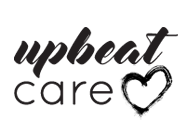What Face Mask Should I Wear?24 June 2020
As lockdown eases and we continue to live with coronavirus, many of us are considering wearing a face mask when we are out in public and social distancing becomes more difficult. At the time of writing, the BBC reports that face coverings have been made compulsory in England and Scotland when travelling on public transport and in Wales it is still a recommendation. It seems like the rules are constantly changing and the number of different types of masks feels over whelming. In this article below we summarise the two most important. Advice from the World Health Organisation (WHO) is that medical grade face masks should be worn by people over 60, those with health issues and anyone who has or is caring for someone with Covid-19 symptoms. The WHO advice to everyone else is to wear a three-layer fabric mask. While the level of protecting is a bit lower, the WHO say that if used properly and combined with other measures such as distancing and handwashing 3 layer masks can significantly help control the spread of the disease.. Members of the public who chose not to wear masks or who use homemade face covers should be aware of their limitations. In these cases social distancing, hand hygiene and avoiding touching the mask or face is of considerably more important. If you decide, or are required, to wear a mask and you want more than a simple home made face covering then the choices can seem overwhelming. There is a sea of unfamiliar terms, such a Medical or Surgical, Types I, IR, II, IIR, FFP2 and FFP3, N95; valved, folded or moulded..Here we explain the two types that have been recommended by WHO so you can make your mind up about what works best for your situation. The Type IIR Medical Grade Surgical Face Mask These masks are primarily intended to stop the wearer passing on the disease. They are the kind used by surgeons in the operating theatre to ensure that patient doesn’t get infected during surgery. They can protect the wearer from larger droplets in the environment but are mainly intended to stop the virus being passed on. They are comfortable to wear with pleated style ear loops and a loose fit. The important part is the three layer design which, when tested in the direction of exhalation has a BFE (bacterial filtration efficiency) of 98%. The FFP2 Medical Grade Respiratory Face Mask These masks are intended for people who are at very high risk of catching the disease such as health workers dealing directly with Covd-19 patients. The FFP2 face masks meet the guidelines from the WHO and give the highest level of protection for the wearer against airborne particles and viral transmission. These masks are not shaped to your face but are simply held in place by the elastic earloop. They have a typical lifespan of 3-8 hours depending on environmental factors after which they need to be disposed of properly. These type of face masks are tested on the direction of inspiration (outside to inside) and they have a filtration efficiency of at least 94% and a maximum of 8% leakage to the inside. Other terms to consider The masks described above may be valved or unvalved and molded or folded with different pros and cons. Valved vs Unvalved. An unvalved mask has the filtration system built into the fabric, this makes the mask lightweight and therefore more comfortable to wear. A valved mask can be bulky but they tend to be less sweaty and stuffy than unvalued masks, this makes them more comfortable to wear. Folded vs Moulded. A folded mask is small and easy to carry around, they sit close to the face however they generally do not have a perfectly flush fit. In contrast moulded masks fit snuggly over the nose, mouth and chin and gives the closest fit possible. This minimises the risk of particles getting into your respiratory system through any gaps that a looser-fitting mask might leave but they are more bulky and less comfortable. How to put on a Facemask to minimise contamination Whatever mask you chose, its important if you use it correctly. · Practice proper hand hygiene each time you put on, remove, or touch the surface of your face mask. · Put on and take off the mask by holding it by the ear loops, avoid touching the front of the mask. · Make sure the face mask fits snugly and the straps fit securely over your ears. · Avoid touching the mask while it is on your face. · Remove and replace the mask after the recommended length of wear. Above all, regardless of what kind of mask you chose to wear the message is still to maintain socially distancing, have good hand hygiene and avoid touching your face. |






